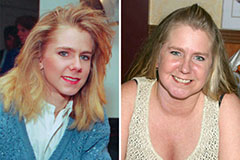The smart Trick of Uv/vis That Nobody is Discussing
Table of Contents8 Simple Techniques For Uv/visSpectrophotometers Can Be Fun For EveryoneFascination About Uv/visThe Main Principles Of Circular Dichroism 7 Easy Facts About Circular Dichroism ShownNot known Factual Statements About Circularly Polarized Luminescence Unknown Facts About Circular DichroismSome Ideas on Circularly Polarized Luminescence You Need To KnowUv/vis/nir - An OverviewGetting My Uv/vis To WorkSome Known Details About Uv/vis Everything about Uv/visAbout Spectrophotometers
It is then scanned through the sample and the reference solutions. Fractions of the incident wavelengths are transmitted through, or reflected from, the sample and the reference. The resultant light strikes the photodetector device, which compares the relative strength of the 2 beams. Electronic circuits transform the relative currents into direct transmission portions and/or absorbance/concentration worths.The transmission of a referral substance is set as a baseline (information) worth, so the transmission of all other substances are taped relative to the preliminary "zeroed" compound. The spectrophotometer then transforms the transmission ratio into 'absorbency', the concentration of specific components of the test sample relative to the preliminary compound.
Given that samples in these applications are not readily offered in big quantities, they are specifically suited to being analyzed in this non-destructive technique. In addition, precious sample can be conserved by utilizing a micro-volume platform where as little as 1u, L of sample is required for complete analyses. A brief description of the treatment of spectrophotometry includes comparing the absorbency of a blank sample that does not consist of a colored compound to a sample which contains a colored compound.
Uv/vis/nir - An Overview
In biochemical experiments, a chemical and/or physical home is chosen and the treatment that is used specifies to that residential or commercial property in order to derive more info about the sample, such as the amount, purity, enzyme activity, and so on. Spectrophotometry can be used for a variety of methods such as identifying optimal wavelength absorbance of samples, identifying optimal p, H for absorbance of samples, identifying concentrations of unidentified samples, and figuring out the p, Ka of various samples.: 21119 Spectrophotometry is likewise a helpful process for protein purification and can also be utilized as a method to produce optical assays of a compound.
It is possible to understand the concentrations of a two component mix utilizing the absorption spectra of the basic options of each component. To do this, it is essential to understand the termination coefficient of this mixture at two wave lengths and the extinction coefficients of options which contain the known weights of the two components.

The Facts About Circularly Polarized Luminescence Uncovered
Area. The concentration of a protein can be approximated by determining the OD at 280 nm due to the existence of tryptophan, tyrosine and phenylalanine.
This technique needs a spectrophotometer capable of measuring in the UV area with quartz cuvettes.: 135 Ultraviolet-visible (UV-vis) spectroscopy involves energy levels that thrill electronic shifts. Absorption of UV-vis light excites molecules that are in ground-states to their excited-states.
20. 8 O.D. Ink makers, printing business, fabrics suppliers, and a lot more, require the data offered through colorimetry. They take readings in the region of every 520 nanometers along the visible region, and produce a spectral reflectance curve or an information stream for alternative discussions. These curves can be utilized to test a brand-new batch of colorant to examine if it makes a match to specifications, e.
Uv/vis Things To Know Before You Buy
Conventional noticeable area spectrophotometers can not detect if a colorant or the base product has fluorescence. This can make it hard to manage color problems if for example one or more of the printing inks is fluorescent. Where a colorant contains fluorescence, a bi-spectral fluorescent spectrophotometer is used (http://connect.releasewire.com/company/olis-clarity-343997.htm). There are 2 significant setups for visual spectrum spectrophotometers, d/8 (round) and 0/45.
Scientists utilize this instrument to determine the quantity of compounds in a sample. If the compound is more concentrated more light will be soaked up by the sample; within small ranges, the Beer, Lambert law holds and the absorbance in between samples differ with concentration linearly. In the case of printing measurements 2 alternative settings are commonly used- without/with uv filter to control much better the result of uv brighteners within the paper stock.
The smart Trick of Spectrophotometers That Nobody is Talking About
Some applications require small volume measurements which can be carried out with micro-volume platforms. As described in the applications area, spectrophotometry can be used in both qualitative and quantitative analysis of DNA, RNA, and proteins. Qualitative analysis can be utilized and spectrophotometers are used to record spectra of substances by scanning broad wavelength areas to figure out the absorbance residential or commercial properties (the strength of the color) of the compound at each wavelength.

Some Known Details About Uv/vis
One significant factor is the type of photosensors that are offered for various spectral regions, however infrared measurement is also challenging due to the fact that virtually everything produces IR as thermal radiation, especially at wavelengths beyond about 5 m. Another issue is that many materials such as glass and plastic soak up infrared, making it incompatible as an optical medium.
Recovered Dec 23, 2018. Essential Lab Techniques for Biochemistry and Biotechnology (Second ed.). The essential guide to analytical chemistry.
Oke, J. B.; Gunn, J. E.
Facts About Spectrophotometers Uncovered

Ninfa AJ, Ballou DP, Benore M (2015 ). Basic Lab Methods for Biochemistry and Biotechnology (3, rev. ed.). UV/Vis/NIR. Laboratory Devices.
A Biased View of Spectrophotometers
"Applied Spectrophotometry: Analysis of a Biochemical Mixture". Biochemistry and Molecular Biology Education. Journal of Biochemistry Education.
Spectrophotometers Things To Know Before You Buy
U.S. Department of Commerce National Bureau of Standards special publication; 378. Washington, D.C.: U.S. National Bureau of Standards. p. 2. OCLC 920079.
The procedure begins with a controlled light that brightens the analyzed sample. When it comes to reflection, as this light interacts with the sample, some is soaked up or released. The given off light journeys to the detector, which is analyzed, measured, and presented as industry-standard color scales and indices.
Industry governing bodies usually specify particular metrics for specific products, such as Tomato and Coffee indices. The simplified mathematics appears like this: Where R is the reflection coefficient. All Visit This Link terms are evaluated over the visible spectrum from 400 to 700 nm. In the case of transmission, when the light interacts with the sample, it is either soaked up, shown, or sent.
Circularly Polarized Luminescence Fundamentals Explained
Examples include APHA (American Public Health Association) for watercolor and pureness analysis, ASTM D1500 for petrochemical color analysis, edible oil indices utilized in food, and color analyses of beverages. The streamlined math looks like this:. Where T is the transmission coefficient. All terms are assessed over the noticeable spectrum from 400 to 700 nm.
Image Credit: Matej Kastelic/ Dr. Arnold J. Beckman and his associates at the National Technologies Laboratories initially invented the spectrophotometer in 1940. In 1935 Beckman founded the company, and the discovery of the spectrophotometer was their most ground-breaking invention.
Circularly Polarized Luminescence Fundamentals Explained
Over time, scientists kept enhancing the spectrophotometer design to boost its efficiency. The UV capabilities of the model B spectrophotometer were improved by changing the glass prism with a quartz prism.
Generally, a spectrophotometer is made up of two instruments, particularly, a spectrometer and a photometer. A basic spectrophotometer includes a light source, a monochromator, a collimator for straight light beam transmission, a cuvette to place a sample, and a photoelectric detector.
What Does Uv/vis/nir Mean?
There are various types of spectrophotometers in different shapes and sizes, each with its own function or performance. A spectrophotometer determines how much light is shown by chemical parts. UV/Vis/NIR. It measures the difference in light strength based on the total quantity of light introduced to a sample and the amount of beam that travels through the sample service
According to the instrument's style, the sample is positioned in between the spectrometer and the photometer. After the light is passed through the sample, the photometer determines its strength and displays the reading. A spectrophotometer is used to determine the concentration of both colorless and colored solutes in an option. This instrument is utilized to determine the rate of a reaction.
 Jason J. Richter Then & Now!
Jason J. Richter Then & Now! Daryl Hannah Then & Now!
Daryl Hannah Then & Now! Tonya Harding Then & Now!
Tonya Harding Then & Now! Andrew McCarthy Then & Now!
Andrew McCarthy Then & Now! Bill Cosby Then & Now!
Bill Cosby Then & Now!